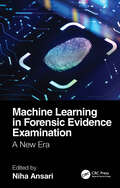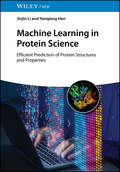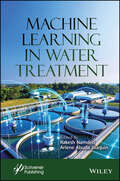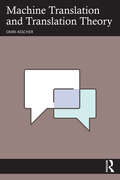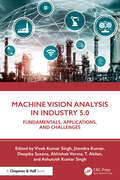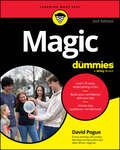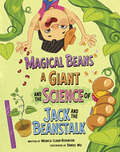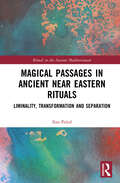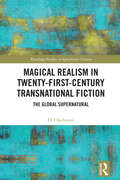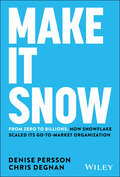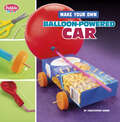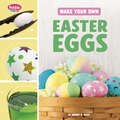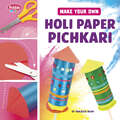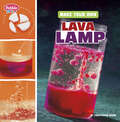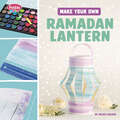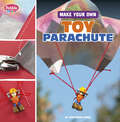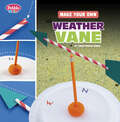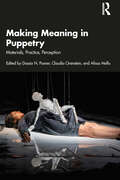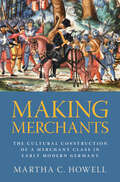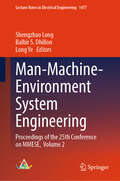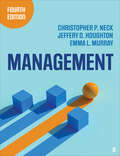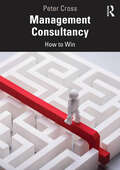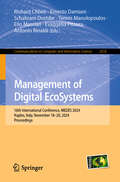- Table View
- List View
Machine Learning in Forensic Evidence Examination: A New Era
by Niha AnsariThe availability of machine-learning algorithms, and the immense computational power required to develop robust models with high accuracy, has driven researchers to conduct extensive studies in forensic science, particularly in the identification and examination of evidence found at crime scenes. Machine Learning in Forensic Evidence Examination discusses methodologies for the application of machine learning to the field of forensic science.Evidence analysis is the cornerstone of forensic investigations, examined for either classification or individualization based on distinct characteristics. Artificial intelligence offers a powerful advantage by efficiently processing large datasets with multiple features, enhancing accuracy and speed in forensic analysis to potentially mitigate human errors. Algorithms have the potential to identify patterns and features in evidence such as firearms, explosives, trace evidence, narcotics, body fluids, etc. and catalogue them in various databases. Additionally, they can be useful in the reconstruction and detection of complex events, such as accidents and crimes, both during and after the event. This book provides readers with consolidated research data on the potential applications and use of machine learning for analyzing various types of evidence. Chapters focus on different methodologies of machine learning applied in different domains of forensic sciences such as biology, serology, physical sciences, fingerprints, trace evidence, ballistics, anthropology, odontology, digital forensics, chemistry and toxicology, as well as the potential use of big data analytics in forensics. Exploring recent advancements in machine learning, coverage also addresses the challenges faced by experts during routine examinations and how machine learning can help overcome these challenges.Machine Learning in Forensic Evidence Examination is a valuable resource for academics, forensic scientists, legal professionals and those working on investigations and analysis within law enforcement agencies.
Machine Learning in Protein Science: Efficient Prediction of Protein Structures and Properties
by Jinjin Li Yanqiang HanHarness the power of machine learning for quick and efficient calculations of protein structures and properties Machine Learning in Protein Science is a unique and practical reference that shows how to employ machine learning approaches for full quantum mechanical (FQM) calculations of protein structures and properties, thereby saving costly computing time and making this technology available for routine users. Machine Learning in Protein Science provides comprehensive coverage of topics including: Machine learning models and algorithms, from deep neural network (DNN) and transfer learning (TL) to hybrid unsupervised and supervised learning Protein structure predictions with AlphaFold to predict the effects of point mutations Modeling and optimization of the catalytic activity of enzymes Property calculations (energy, force field, stability, protein-protein interaction, thermostability, molecular dynamics) Protein design and large language models (LLMs) of protein systems Machine Learning in Protein Science is an essential reference on the subject for biochemists, molecular biologists, theoretical chemists, biotechnologists, and medicinal chemists, as well as students in related programs of study.
Machine Learning in Water Treatment
by Rakesh Namdeti Arlene Abuda JoaquinMachine Learning in Water Treatment is a must-have for anyone interested in how artificial intelligence is transforming water treatment, offering practical insights, case studies, and a deep dive into cutting-edge machine learning techniques that can improve water quality management. Machine Learning in Water Treatment explores the complex fields of wastewater treatment and water purification, offering a thorough analysis of the cutting-edge machine learning methods used to solve problems with water quality control. It provides insights into how artificial intelligence can be incorporated with conventional procedures, bridging the gap between conventional water treatment techniques and state-of-the-art data-driven solutions. The book will cover the foundations of water treatment procedures, providing insights into the ideas behind physical, chemical, and biological treatment modalities. Difficulties in managing water and wastewater quality are paving the way for the use of machine learning as an effective tool for control and optimization. Fundamentally, the book explains how machine learning models are used in water treatment system control, optimization, and predictive modeling. Readers will learn how to take advantage of machine learning algorithms’ potential for real-time treatment process optimization, quality issue identification, and water pollutant level prediction through a thorough investigation of data collection, preprocessing, and model creation. Case studies and real-world applications provide insightful information about the application of machine learning technologies in a variety of scenarios. With its unique combination of theoretical understanding and real-world applications, this book is an invaluable tool for understanding how water quality management is changing in the age of data-driven decision-making.
Machine Translation and Translation Theory
by Omri AsscherPervasive and ubiquitous, machine translation systems have been transforming communication and understanding across languages and cultures on a historical scale. Focused on both Neural Machine Translation tools, such as Google Translate, and generative AI tools, such as ChatGPT, Omri Asscher pursues the juncture between machine translation and the diverse, often competing, frameworks of human translation theory. He shines a light on the subtleties of the intersection between the two: the places where machine translation corresponds well with the ideas that have been developed on human translation throughout the years, and the places where machine translation seems to challenge translation theory, and perhaps even require that we rethink some of its basic assumptions.Machine Translation and Translation Theory reflects the need for an accessible, panoramic view on the subject. It offers a detailed discussion of various points of theoretical interest: definitions of translation; equivalence in translation; aesthetics of translation; translation ethics; translation as cross-cultural communication; and translation's historical agency.This is key reading for researchers and students in translation studies, as well as scholars of AI-mediated communication, and computer scientists interested in how machine translation architectures correspond with the understanding of translation in the humanities.
Machine Vision Analysis in Industry 5.0: Fundamentals, Applications, and Challenges
by Jitendra Kumar Abhishek Verma Vivek Kumar Singh Ashutosh Kumar Singh Deepika Saxena T. AkilanThis book is an introduction to fundamental techniques of image analysis with machine vision and their applicability in Industry 5.0. It provides basic and emerging techniques in the field of image analysis and machine vision in Industry 5.0. It also covers an extensive study of recent related work and research challenges in the field. Further, it discusses some effective solutions to address the challenges of digitally transforming industrial activities and improving their efficiency. Provides effective and robust machine vision-enabled methods across different industrial fields, emphasizing their applicability and reliability Covers the emerging concepts of image analysis and machine vision utilized in the digital transformation of manufacturing activities under Industry 5.0 Discusses conceptual methodologies of image analysis and machine vision tailored for various industrial applications, providing insights into their practical implementation Practical issues on implementing machine vision applications with image analysis techniques in Industry 5.0 are addressed, offering guidance on method implementation Includes case studies of various industrial processes, highlighting current challenges and presenting effective solutions, offering real-world insights into the application of machine vision It is a reference book for research students, scientists, and professionals working in the fields of image processing, computer vision, and the Internet of Things.
Magic For Dummies
by David PogueDevelop the knowledge, skill, and showmanship you need to thrill audiences of all ages Magic For Dummies is your introduction to mystifying friends, family, and the world at large with the art of the magic. Emmy award-winning author David Pogue teaches you dozens of fun, inexpensive tricks that you can do with everyday objects like office supplies, clothing, food, and even your phone. Card tricks, sleight of hand, disappearing tricks—it's all in here. You'll also learn how to practice and improve your skills, so you can take your magical performances to the next level. Plus, this book includes tips on how to refine your techniques, so you can dazzle any live or virtual audience. This entertaining introduction to the world of illusion is a must for aspiring magicians. Get easy instructions on how to perform and perfect basic magic tricks Become a more entertaining magician, with tips on connecting with your audience Discover the fun of performing magic tricks for friends and strangers, in person and online Wow people of all ages with card tricks, optical illusions, and beyond This book is for readers of all ages who want to learn the art of magic, including beginners and those who have already tried a trick or two.
Magical Beans, a Giant, and the Science of Jack and the Beanstalk
by Monica Clark-RobinsonIt is said that Jack sold his beloved cow for five magic beans. But were those beans really magic? Jack retells his story and incorporates science to try and verify his tale. Between the huge beanstalk and the scary giant, Jack has a lot to investigate. Thankfully, he can use the scientific method and work through each experiment step by step.
Magical Passages in Ancient Near Eastern Rituals: Liminality, Transformation and Separation (Ritual in the Ancient Mediterranean)
by Ilan PeledThis book focuses on the element of thresholds – makeshift gates, makeshift structures and house doors – as concepts of liminality in ancient Near Eastern magical rituals, and the idea of transformation they reflect.Readers gain an in-depth understanding of theories of liminality and rites of passage, and how they illuminate fascinating aspects of social behavior and religious and cultic practices in ancient Near Eastern societies, specifically those of Hatti and Mesopotamia. Ritual liminality, manifested in the use of makeshift and permanent architectural elements, was meant to facilitate two different aims: transformation from one category to the other (using makeshift gates and structures) and separation between categories (using house doors). The book presents the pertinent ritual texts in their original languages, analyzes these texts in detail and offers comparative discussions of the different cultures that practiced these rituals.Magical Passages in Ancient Near Eastern Rituals is suitable for students and scholars interested in ancient religions, rituals and cults, particularly in the ancient Near East, as well as those working on ancient history, philology, anthropology and religious studies more broadly.
Magical Realism in Twenty-First-Century Transnational Fiction: The Global Supernatural (Routledge Studies in Speculative Fiction)
by D. ChichesterMagical Realism in Twenty-First-Century Transnational Fiction: The Global Supernatural offers a much-needed re-evaluation of magical realism, moving beyond traditional postcolonial frameworks to explore its vibrant evolution in the 21st century. Analysing the works of contemporary authors like Helen Oyeyemi, Mohsin Hamid, Preeta Samarasan and Junot Díaz, this book explores how magical realism has been adapted to depict the complex, fluid identities and experiences of migrants and their children in a globalised world. By employing the psychoanalytic concept of relationality, it examines the intricate interplay between cultures, beliefs and personal narratives. Challenging outdated notions of ‘magic’ versus ‘realism’, this study reveals how the supernatural is used to express the disorientation, paradox and trauma of transnational lives. This book is essential for anyone seeking to understand the enduring creative power of magical realism.
Make It Snow: How Snowflake Scaled its Go-to-Market Organization
by Denise Persson Chris DegnanFollow along on the journey of the founding, development, and breakaway success of a multi-billion-dollar tech company Founding Snowflake CRO, Chris Degnan, and CMO, Denise Persson, have one of the longest executive sales and marketing relationships in history. They each built their teams from the ground up to help catapult Snowflake from a startup to one of the fastest-growing technology companies. Along the way, they evolved, innovated and executed as a single entity to deliver impact, while aligning with Snowflake's number one company value: put customers first. Learn how Chris and Denise united two historically divided teams in Corporate America to achieve long-lasting customer relationships and enduring company success. This book covers Snowflake' sales and marketing evolution through three phases of the company: Startup, Build and Scale. Readers will learn: How and when to jumpstart your sales and marketing teams. How to develop product market fit and your competitive strategy. Why business partners are critical to sales success. The importance of establishing a culture early, and how. Why demand gen should be marketing's northern star. What success looks like when hiring, retaining and saying goodbye. Building for a billion: restructuring sales, scaling a data-driven marketing team. This book targets startup founders and executives, venture capital partners and the boards of directors of early- and mid-stage technology startups. Sales and marketing are often neglected in these companies, with focus squarely placed on engineering and product teams that determine sales and marketing functions. There is a better way. Armed with the strategies and tactics contained in this book, senior stakeholders of startup companies can jump-start and align their sales and marketing go-to-market strategy sooner and with more impact.
Make Your Own Balloon-Powered Car
by Christopher HarboBudding young scientists can experiment with wheels and axles and forces and motion with this fun project! Kids can gather simple supplies, follow the steps, and watch their car zoom away. Readers can also learn about the scientific concepts that put their car in motion. The Take It Further feature suggests modifications to try, encouraging kids to extend their experimentation.
Make Your Own Easter Eggs
by Mandy R. MarxEaster is a Christian holiday celebrated in spring. Colorful eggs are a fun part of this tradition. Step-by-step instructions explain how to dye and decorate beautiful Easter eggs. Vibrant photographs support emergent and early readers who are eager to take on a project with minimal adult assistance.
Make Your Own Holi Paper Pichkari
by Ranjeeta RaamHoli is called “the festival of colors.” This Hindu celebration marks the beginning of spring. People fill the streets on Holi. They throw colorful powder and spray water on each other with plastic pichkaris. Step-by-step instructions explain how to make a paper pichkari decoration. Vibrant photographs support emergent and early readers who are eager to take on a project with minimal adult assistance.
Make Your Own Lava Lamp
by Christopher HarboBudding young scientists can experiment with chemical reactions in this super easy and fun project! Kids can gather simple supplies, follow the steps, and watch what happens inside their lava lamp. Readers can also learn about the scientific concepts behind the visual spectacle. The Take It Further feature suggests modifications to try, encouraging kids to extend their experimentation.
Make Your Own Passover Seder Pillowcase
by Emily RaijA seder celebrates the Jewish holiday of Passover. During this special meal, people might rest against pillows on their chairs. Step-by-step instructions explain how to decorate a pillowcase for the seder pillow. Vibrant photographs support emergent and early readers who are eager to take on a project with minimal adult assistance.
Make Your Own Ramadan Lantern
by Golriz GolkarRamadan is a holy month of fasting observed by Muslims around the world. Each night, lanterns are lit to remind people of joy and goodness. Step-by-step instructions explain how to make a beautiful paper lantern. Vibrant photographs support emergent and early readers who are eager to take on a project with minimal adult assistance.
Make Your Own Toy Parachute
by Christopher HarboBudding young scientists can experiment with gravity in this super easy and fun project! Kids can gather simple supplies, follow the steps, and watch their toy parachute float to the ground. Readers can also learn about the scientific concepts behind the parachute's gentle descent. The Take It Further feature suggests modifications to try, encouraging kids to extend their experimentation.
Make Your Own Weather Vane
by Christopher HarboBudding young scientists can find out what direction the wind is blowing with this easy and fun project! Kids can gather simple supplies, follow the steps, and test out their new weather vane. Readers can also learn about the scientific concepts that make the weather vane work. The Take It Further feature suggests modifications to try, encouraging kids to extend their experimentation.
Making Meaning in Puppetry: Materials, Practice, Perception
by Dassia N. PosnerFrom ice puppets to robots, from intricate marionettes to abstract forms, Making Meaning in Puppetry investigates the elusive and multifaceted how of how puppets make meaning in performance.This engaging collection develops a vocabulary for understanding and articulating how the puppet’s meaning-making systems work across the book’s three distinct parts. Part 1 on Materiality illuminates how materials are chosen and dramaturgy is crafted into a puppet’s design; Part 2 on Practice investigates the interresponsive collaboration between puppet and puppeteer; and Part 3 on Perception considers how spectators understand and read a puppet production. The volume thus traces the full evolution of a puppet, from its raw materials, to its performance possibilities, to the moment it comes to imagined life. The seventeen chapters, authored by experts in the field, build bridges between puppetry and related fields, such as robotics, phenomenology, cognitive science, and queer theory, while using the puppet as their primary anchor of analysis.Making Meaning in Puppetry is ideal for students of theatre and performance studies, theatre artists, scholars, and anyone who is fascinated by this rich performance form and wants to understand it more deeply.
Making Merchants: The Cultural Construction of a Merchant Class in Early Modern Germany
by Martha C. HowellUsing a rare collection of personal narratives written by successful merchants in early modern German-speaking Europe, this study examines how such men understood their role in commerce and in society more generally. As they told it, their honor was based not just on riches won in long-distance trade but, more fundamentally, on their comportment both in and outside the marketplace. As these men described their experiences as husbands and fathers, as civic leaders, as men who “lived nobly,” or as practitioners of their faith, they did not, however, seek to obscure their role as merchants. Rather, they built on it to construct a class identity that allowed them entry into the period's moral economy. Martha C. Howell not only disrupts linear histories of capitalism and modernity, she demonstrates how the model of mercantile honor these merchants fashioned would live beyond the early modern centuries, providing later capitalists with a narrative about their own self-worth.
Man-Machine-Environment System Engineering: Proceedings of the 25th Conference on MMESE, Volume 2 (Lecture Notes in Electrical Engineering #1477)
by Balbir S. Dhillon Shengzhao Long Long YeThis book includes best papers selected from more than 500 papers submitted at 25th International Conference on Man-Machine-Environment System Engineering (MMESE) 2025. It covers the best research topics and the latest development trends in MMESE theory and application. MMESE is a scientific study of the design concepts and quantitative analysis of a complex giant system using physiology, psychology, system engineering, computer science, environment science, management theory, education, and other related disciplines methods. MMESE focuses mainly on the relationship and the optimum combination between man, machine, and environment. The three optimized goals of the MMESE study are safety, efficiency, and economy. Researchers and professionals who study a human-centered interdisciplinary subject crossing above disciplines will be mostly benefited from the proceedings. In 1981, with direct support from one of the greatest modern Chinese scientists, Xuesen Qian, Man-Machine-Environment System Engineering (MMESE), the integrated and advanced science research topic was established in China by Professor Shengzhao Long. In the letter to Shengzhao Long on October 22, 1993, Xuesen Qian wrote: &“You have created a very important modern science subject and technology in China!&”.
Management
by Christopher P. Neck Jeffery D. Houghton Emma L. MurrayManagement, Fourth Edition introduces students to the planning, organizing, leading, and controlling functions of management, with an emphasis on how managers can cultivate an entrepreneurial mindset. The text includes 34 case studies profiling a wide range of companies including The Progressive Corporation, Catch+Release, and Sephora. Authors Christopher P. Neck, Jeffery D. Houghton, and Emma L. Murray use a variety of examples, applications, and insights from real-world managers to help students develop the knowledge, mindset, and skills they need to succeed in today’s fast-paced, dynamic workplace.
Management
by Christopher P. Neck Jeffery D. Houghton Emma L. MurrayManagement, Fourth Edition introduces students to the planning, organizing, leading, and controlling functions of management, with an emphasis on how managers can cultivate an entrepreneurial mindset. The text includes 34 case studies profiling a wide range of companies including The Progressive Corporation, Catch+Release, and Sephora. Authors Christopher P. Neck, Jeffery D. Houghton, and Emma L. Murray use a variety of examples, applications, and insights from real-world managers to help students develop the knowledge, mindset, and skills they need to succeed in today’s fast-paced, dynamic workplace.
Management Consultancy: How to Win
by Peter CrossMany professionals are now working on a consultancy basis. Management Consultancy: How to Win is a practical guide for both those new to consultancy and experienced consultants seeking formal accreditation. The reader journeys through every stage of a consultancy operation, discovering what commonly needs to be achieved at each one. Every stage is supported by tables, charts, tips, and tools, which the reader may adopt or adapt to their needs. It also delves into the emerging trends in consultancy and its markets, ensuring the reader is up to date and in tune with the industry. Yet theory will only take you so far. A key element of the book is learning from consultancy engagements and the problems common to all consultants, irrespective of the location or culture in which they work. The reader learns from real-life situations faced by consultancies from the largest international names to solopreneurs. This is an essential guide for aspiring, junior, and mid-level career consultants, including those aiming to become Certified Management Consultants or gain the UK’s Chartered Management Consultant status or equivalents elsewhere. Those on executive education programmes or studying business and management at the postgraduate levels will also value its deft mixture of theory and practice.
Management of Digital EcoSystems: 16th International Conference, MEDES 2024, Naples, Italy, November 18–20, 2024, Proceedings (Communications in Computer and Information Science #2518)
by Richard Chbeir Schahram Dustdar Yannis Manolopoulos Elio Masciari Ernesto Damiani Evaggelia Pitoura Antonio RinaldiThis book constitutes the proceedings of the 16th International Conference on Management of Digital EcoSystems, MEDES 2024, held in Naples, Italy, during November 2024. The 23 full papers and 10 Short papers included in this book were carefully reviewed and selected from 65 submissions. They were organized in topical sections as follows: Energy and Environment; Recommendation Systems; Social Networks and Emotion Recognition; Medical and Health Issues; Cybersecurity and Privacy; Data Mining Operations; Parallel and Distributed Systems; Network Aspects, and Applications.
